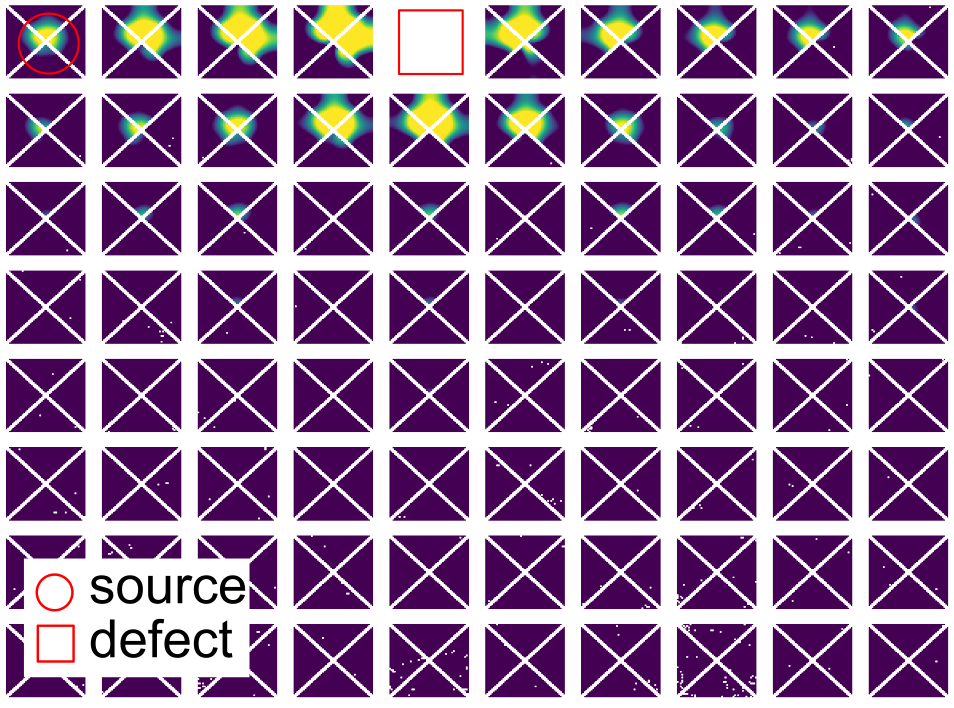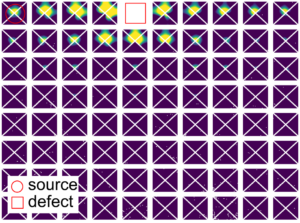Unidirectional spin-wave edge modes in magnonic crystal

In the past decade, research on topological insulators became a hot topic in various fields of physics. Their unusual properties excite the interest of scientists focused on basic as well as applied research.
One of the most intriguing features of topological insulators is the presence of a conductive surface in contrast to the insulating bulk. In the 2D version of a topological insulator, these conducting edge states are protected against scattering and travel along the edge in the fixed prescribed direction. This makes them promising candidates for information carriers in future data processing devices.
Unidirectional edge states were observed experimentally in many wave-hosting platforms, e.g. in electronic systems, acoustic and photonic crystals, or even in a mechanical lattice of rotating gyroscopes. In ferromagnetic systems hosting spin waves, however, even though these topological edge states were predicted theoretically a decade ago, their experimental confirmation still does not exist.
One of the most significant challenges to fabricate a predicted topological spin-wave (magnonic) crystal is its complex geometry. In our recent work, we propose a topological magnonic crystal with simple geometry, that should be a promising candidate for experimental realization and subsequent observation of unidirectional edge states. Our magnonic crystal consists of a lattice of thin ferromagnetic squares which are cut diagonally into equal isosceles triangles. This geometry is relatively simple for fabrication since it can be manufactured from the continuous ferromagnetic layer by removing straight vertical, horizontal, and diagonal lines.
We have shown numerically that our magnonic crystal, when placed in an out-of-plane magnetic field, hosts unidirectional edge states and their direction depends on the strength of the field.

Numerical simulation of the unidirectional edge state in our magnonic crystal. The red circle shows the spot, where the spin wave is injected into the crystal. The spin wave moves in the clockwise direction along the edge of the crystal and it does not scatter in the opposite direction, even if it reaches the defect (red square).
Feilhauer, J., Zelent, M., Zhang, Z., Christensen, J., and Mruczkiewicz, M.: Unidirectional spin-wave edge modes in magnonic crystal, APL Mater. 11 (2023) 021104.
 Contact
Contact Intranet
Intranet SK
SK

